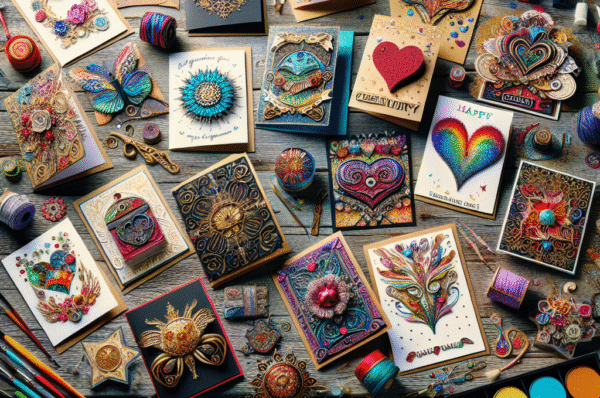The Art of Collecting: How Trading Cards Became a $400 Million Industry
In the world of collectibles, few mediums boast the rich history, thrilling nostalgia, and potential for profit quite like trading cards. From early iterations of baseball cards in the 19th century to the modern explosion of Pokémon and sports trading cards, this niche market has transformed into a multi-billion-dollar industry, boasting an estimated worth of $400 million.
The Origins of Trading Cards
Trading cards have been around for centuries, but their mass production began in the late 1800s. Originally intended as a marketing tool, companies would include these cards in packages of products—most famously, tobacco. Collectors began to see these cards as valuable artifacts, especially as some began to feature baseball players, creating a new avenue for fandom and cultural engagement.
By the mid-20th century, trading cards had evolved beyond marketing gimmicks. Manufacturers such as Topps and Fleer began producing dedicated sets, turning them into desirable collectibles. This foundation set the stage for the burgeoning market that we witness today.
The Boom of the 1980s and 1990s
The 1980s and 1990s were pivotal decades for the trading card industry. During this time, sports cards exploded in popularity, coinciding with the rise of sports fandom, particularly in the United States. Iconic athletes such as Michael Jordan and Ken Griffey Jr. became legends not only on the court and field but also in the realm of card collecting.
Simultaneously, the Pokémon card phenomenon kicked off in the late 1990s, ushering in a new era of pop culture collectibles. Young fans found joy in capturing their favorite creatures while trading and battling with friends. This new wave captured the imagination of both children and adults alike, leading to a significant increase in card sales and values.
The Modern Resurgence
Cut to the 2020s, when the pandemic accelerated a new surge in interest for trading cards. As people were stuck indoors, many turned to nostalgic hobbies to combat boredom. Online marketplaces and social media platforms made it easier than ever to buy, sell, and share their collections. Channels like YouTube and TikTok have seen a rise in influencers dedicated to unpacking and reviewing card collections, further invigorating interest in the hobby.
Additionally, auction houses began selling rare cards for staggering prices. For instance, a 2003 LeBron James rookie card sold for a jaw-dropping $5.2 million in 2021, pushing many collectors to take a serious look at their own portfolios. The trading card market began to solidify its status as a burgeoning investment opportunity, attracting not only resellers and hobbyists but also high-profile investors.
The Intersection of Gaming and Collecting
Trading cards are not limited to sports; games like Magic: The Gathering and Yu-Gi-Oh! have carved their own substantial niches within the industry. These games often emphasize strategy and community, and their collectible cards possess unique artwork and lore, inviting players to immerse themselves deeply. The combination of gaming and collecting has generated an enthusiastic following that continues to grow.
Technology and the Future
As with many industries, technology is the driving force powering the evolution of trading cards. Digital trading card platforms, such as NBA Top Shot and Sorare, have introduced blockchain technology and non-fungible tokens (NFTs) to the traditional world of card collecting. These innovations provide collectors with a new way to own and trade cards, while also introducing mechanisms for preserving rarity and authenticity.
However, the rise of digital trading cards has ignited debates around the nature of collecting. Will physical trading cards fade into obscurity, or will they coexist with their digital counterparts? The answer remains complex, influenced by consumer preferences and the ever-changing landscape of digital assets.
Conclusion: The Enduring Allure of Collecting
The trading card industry exemplifies a fascinating intersection of art, culture, nostalgia, and investment. It bridges generations, bringing together grandparents who collected baseball cards in their youth and children who trade Pokémon cards on playgrounds today. The market’s resilience and capacity for reinvention suggest that trading cards are not just a trend but an enduring aspect of our culture.
As enthusiasts sift through shoeboxes, search online marketplaces, and keep their eyes peeled for the next hidden gem, one thing is clear: the art of collecting trading cards will continue to thrive, captivating collectors and investors alike in the decades to come.




